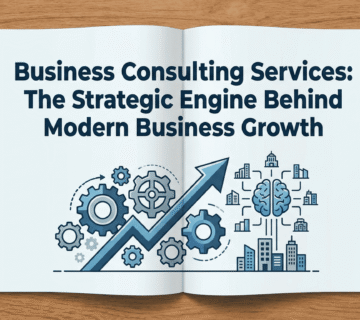Table of Contents
ToggleIs your business running on an outdated version of Microsoft Dynamics NAV? While NAV has been a reliable workhorse, it’s time to unlock new levels of growth, efficiency, and intelligence. The future of business management is in the cloud, and Microsoft Dynamics NAV has officially evolved into Microsoft Dynamics 365 Business Central.
As a top Microsoft Dynamics 365 Partner in Saudi Arabia, TRAX GROUP specializes in seamlessly migrating businesses like yours from legacy NAV systems to the power and flexibility of the cloud. This isn’t just an upgrade; it’s a transformation that empowers you to thrive in Saudi Arabia’s dynamic digital economy.
This guide will walk you through why moving from NAV is essential, the immense benefits of Business Central, and how TRAX GROUP ensures your migration is a smooth, strategic success.
Dynamics NAV is Now Business Central: Understanding the Evolution
Microsoft Dynamics NAV was a powerful, on-premise ERP solution for its time. However, Microsoft’s strategic vision has fully shifted to the cloud.
The End of Mainstream Support: Mainstream support for most NAV versions has ended, meaning no new features and only limited security updates.
The Cloud-First Future: All of Microsoft’s innovation and investment is now focused on Dynamics 365 Business Central, its cloud-native successor.
From Product to Platform: NAV was an ERP product. Business Central is an integrated business management platform within the broader Microsoft Cloud.
Sticking with NAV means missing out on modern capabilities, risking security, and falling behind competitors who have already made the move.
Why Your Business in Saudi Arabia Must Upgrade Now
Continuing with an on-premise NAV system poses significant challenges for modern businesses in KSA:
High Total Cost of Ownership (TCO): Maintaining servers, managing IT infrastructure, and paying for expensive custom upgrades drains your budget.
Lack of Mobility & Remote Access: NAV isn’t built for a mobile, remote, or hybrid workforce, limiting your team’s flexibility and productivity.
Complex Saudi Compliance Updates: Manually updating NAV for evolving ZATCA e-invoicing, VAT, and Zakat regulations is complex, costly, and prone to error.
Data Silos and Lack of Insights: NAV often operates in isolation, preventing a unified view of your business and hindering data-driven decision-making.
Business Central: The Power of NAV, Reimagined for the Cloud
Think of Business Central as “NAV, but better in every way.” It contains all the functionality you rely on, but enhanced for the modern era.
1. All Your Familiar NAV Features, Enhanced
You won’t lose the capabilities you depend on. Business Central includes robust functionality for:
Financial Management
Supply Chain & Inventory
Project Management
Manufacturing & Job Costing
Sales & Service Management
…all presented in a modern, intuitive interface.
2. The Unbeatable Advantage of Cloud Native
This is the core of the upgrade:
Access Anywhere: Manage your business from Riyadh, Jeddah, or anywhere with an internet connection on any device.
Automatic Updates: Your system is always up-to-date with the latest features, security patches, and—critically—Saudi compliance updates, with no effort or cost from your IT team.
Reduced IT Overhead: No more servers, no more complex upgrade projects. Shift your IT focus from maintenance to innovation.
3. Deep Integration with the Microsoft 365 Ecosystem
This is a game-changer that NAV could never offer.
Work in Outlook & Teams: Create sales invoices from Outlook and access customer data directly in Microsoft Teams.
Power BI Analytics: Get built-in, interactive dashboards and advanced analytics that turn your NAV data into actionable intelligence.
Power Platform: Use Power Apps and Power Automate to easily build custom solutions and automate workflows without heavy coding.
4. Future-Proof Compliance for Saudi Arabia
As your local partner, TRAX GROUP ensures your Business Central system is pre-configured for the Saudi market.
ZATCA E-Invoicing: We ensure seamless generation of Phase 2-compliant e-invoices (Fatoora) directly from the system.
VAT & Zakat Management: Automate complex calculations and reporting to stay fully compliant with Saudi authorities.
The TRAX GROUP Methodology for a Seamless NAV to BC Migration
We understand that a migration can seem daunting. Our proven process, designed specifically for NAV users in Saudi Arabia, eliminates the risk and maximizes your return.
Comprehensive Assessment: We analyze your current NAV system, customizations, and data to build a precise migration plan.
Strategic Planning & Mapping: We map your existing processes to Business Central’s advanced capabilities, identifying opportunities for improvement.
Data Migration & Configuration: Our experts clean, validate, and migrate your historical data. We configure Business Central to your needs, including all essential Saudi localizations.
User Training & Change Management: We provide tailored training to get your team up to speed quickly, focusing on the new, user-friendly interface and powerful features.
Go-Live & Ongoing Support: We manage a smooth cutover and provide continuous, local support to ensure your long-term success.
Ready to Move Beyond Legacy Systems?
Stop pouring money into maintaining an outdated platform. Schedule a Free Migration Assessment with a TRAX GROUP expert today to see how easy your upgrade to Business Central can be.
Conclusion: Don't Let Your ERP Hold You Back
Microsoft Dynamics NAV served you well in the past, but the future belongs to agile, intelligent, cloud-based solutions. Microsoft Dynamics 365 Business Central is the clear, powerful, and strategic path forward.
Upgrading with TRAX GROUP is more than a technical migration; it’s an investment in your company’s future growth, efficiency, and competitiveness in the Saudi market.
F.A.Qs
Frequently asked questions
Dynamics NAV is a legacy on-premise ERP, while Business Central is its cloud-native successor. BC offers automatic updates, deeper Microsoft 365 integration, AI insights, and a modern user experience.
Yes, absolutely. TRAX GROUP specializes in migrating businesses from on-premise NAV to the cloud-based Dynamics 365 Business Central platform seamlessly.
While the pricing model shifts to a subscription, the Total Cost of Ownership (TCO) is often lower with Business Central due to eliminated server costs, reduced IT overhead, and no expensive upgrade projects.
No. A key part of TRAX GROUP's migration service is to carefully migrate your historical data and re-implement essential customizations using modern tools in the Business Central platform.
Yes, it has strong manufacturing and job costing capabilities inherited from NAV, now enhanced with real-time analytics and production monitoring, all configured for KSA compliance by TRAX GROUP.
Other Questions
General questions
With TRAX GROUP's expertise, a standard migration typically takes 8-16 weeks, depending on the complexity of your data, customizations, and business processes.
TRAX GROUP configures Business Central to automatically handle Zakat calculations, VAT reporting, and ZATCA e-invoicing, ensuring full compliance with Saudi Arabian regulations.
Yes, and this is a major advantage. Business Central has dedicated, full-featured mobile apps for iOS and Android, unlike most NAV deployments which had limited mobile access.





No comment